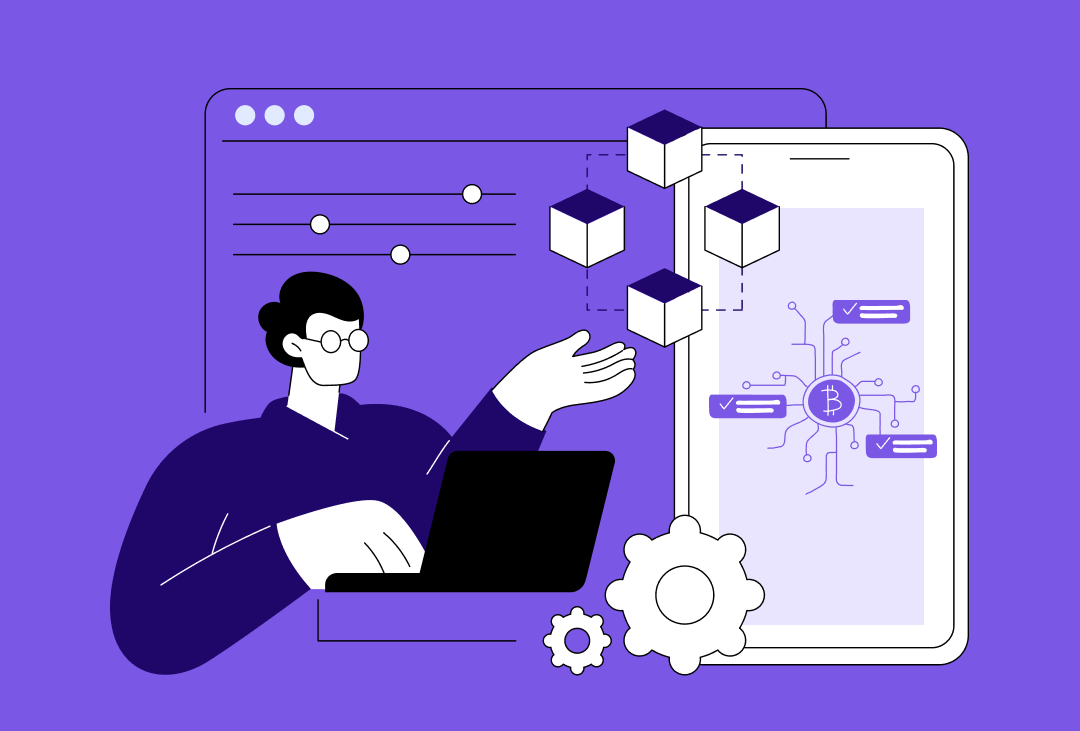- Ethereum 2.0: What It Is
- Ethereum 2.0 vs Ethereum 1.0: What Everyone Ought to Know
- Different Phases of Ethereum 2.0
- Phase 0: PoS Beacon Chain
- Phase 1: Basic Sharding
- Phase 2: EVM State Transition Functioning
- Phase 3: Light Client State Protocol
- Phase 4: Cross-shard Transactions
- Phase 5: Tight Coupling with Main Chain Security
- Phase 6: Super-Quadratic or Exponential Sharding
- Ethereum 1.0 is getting upgraded.
- Ethereum 2.0 is going to be the new face of dApp industry because of its speed, scalability, cost-effectiveness, and other such benefits.
- Ethereum 2.0 will be ready within 18-24 months, in the form of 7 different phases.
- Ethereum 2.0 Phase 0 is expected to be live this year.
Ever since Ethereum was launched back in 2015, the developers were having sky-high hopes from it. While Buterin and Co., the company behind the evolution of this blockchain-based distributed computing platform, made significant changes in its consensus model and scaling solutions, the developer’s demand for an integrated experience of all these changes was not yet fulfilled.
But this Monday, the history of the Ethereum platform changed. The company announced an OS upgrade, known as Ethereum 2.0 (Serenity) – a glance of which we are going to cover within the next 3 seconds.
Ethereum 2.0: What It Is
Ethereum 2.0, according to Van Loon, is a distinct Blockchain from the existing Ethereum Chain, where the hard fork of the current blockchain is not mandatory for proper functioning. Instead, the value in Ethereum 2.0 is transmitted from ‘Proof of Work’ chain through a one-way deposit Smart contract.
With this attended to, let’s have a look into the reason behind the idea of launching this upgrade, or better say, have a comparison of Ethereum 1.0 and Ethereum 2.0
Ethereum 2.0 vs Ethereum 1.0: What Everyone Ought to Know
When it comes to comparing the two OS versions, the reasons that come up as the igniting force behind the introduction of Ethereum 2.0 are the following challenges associated with current Ethereum:-
- Scalability:- Ethereum was launched with an aim to be the world computer that manages all the financial transactions and host dApps and Smart contracts without being impractically slow. However, Ethereum 1.0 is not able to fulfill this requirement while operating with PoW (Proof-of-Work) algorithm – something that gives the scope of introducing other more scalability-friendly platforms in the many Blockchain guide meant for entrepreneurs.
- Security:- Though not a major issue, the security level and considerations associated with Ethereum 1.0 are not advanced. They have to be improved, which is what Ethereum 2.0 is focusing upon.
- A Solution for Difficulty Bomb:- The developers have been continually compelled to shift from PoW to PoS by slowing down the mining rewards. However, this is increasing the difficulty associated with the process, and in the absence of any solution, it has been resulting in a dead end. Ethereum 2.0, in this case, will come up as a solution for the dApp developers to make better applications.
Now as we are familiar with the secret behind launching Ethereum 2.0, let’s dig deeper into what includes in this upgrade and when it will be live.
Ethereum 2.0 denotes a series of updates that will make Ethereum make better and faster by focusing on two prime goals:-
- Introducing PoS (Proof of Stake) consensus mechanism that will eventually eradicate the need to invest in PoW (Proof of Work) mining.
- Introducing Sharding which will boost speed and throughout of the ETH transactions.
Now, when talking about the series of updates, the Ethereum 2.0 is making the update live in different phases. An outcome of which is that the 7 phases of the evolution of Ethereum 2.0 is expected to hit the market – with the Phase 0 just gone live.
Wondering what these different phases are? What will be included in each phase and when are they supposed to be made available to developers? Let’s cover this in the next section of the blog.
Different Phases of Ethereum 2.0
Phase 0: PoS Beacon Chain
The Beacon Chain is a PoS-enabled chain that will run in parallel to Ethereum’s Proof of Work chain and enable a Blockchain app development company to reap the benefits of the network without investing their time and energy into the process of re-learning the parameters of the platform. It is estimated to enter the market this year itself.
Phase 1: Basic Sharding
In this phase, shard chains will work in sync with the Beacon chain. They will aid developers with higher transactional speed and instant output delivery in transactions, which will eventually upgrade the scalability.
Shard chains will be responsible for managing transactions and exchange of account data and will be live in the world in 2020.
Phase 2: EVM State Transition Functioning
Proposed to enter the market in 2020-2021, this phase of Ethereum 2.0 Serenity will be related to the advent of new EVM (Ethereum Virtual Machine) which will be upgraded via the eWASM (Ethereum Web Assembly). This new virtual machine is predicted to perform code execution more swiftly and effectively while supporting many more programming language.
Besides, this phase will also witness the introduction of better protocol standardization to enhance the network security.
Phase 3: Light Client State Protocol
The fourth phase of evolution of Ethereum 2.0 will begin in 2022 and will cover everything related to the improvement of network in terms of security, scalability, and decentralization.
Phase 4: Cross-shard Transactions
This phase will be basically related to mind mapping of the complete architecture and will be seen somewhere around 2022.
Phase 5: Tight Coupling with Main Chain Security
The sixth phase of Ethereum 2.0 Serenity will be associated with internally fork-free sharding and data availability proofs.
Phase 6: Super-Quadratic or Exponential Sharding
The last phase of Ethereum 2.0 (Serenity), which will go live by the end of the year 2022, will be related to managing recursive shards.
The process of evolution of Ethereum 2.0, with 7 seven phases is announced to be completed within 18-24 months. This implies we will be able to enjoy 100 times more scalable network by the year 2022 along with other facilities like transition of Ether tokens from old chain to new one.



How Much Does it Cost to Build a Blockchain App in the UAE?
Key takeaways: The UAE blockchain market is rapidly expanding, with the BFSI sector capturing over 50% of the market share. As blockchain adoption accelerates, development costs in the UAE range from AED 55,000 to AED 1.85 million, depending on app complexity and features. Factors such as platform selection, security measures, and third-party integrations directly impact…

How Blockchain Integration Is Optimizing Business Processes in Dubai
Key takeaways: Blockchain is a strategic enabler in Dubai, transforming traditional business workflows by enhancing efficiency, transparency, and automation beyond cryptocurrency applications. Dubai’s supportive regulatory environment and government initiatives (e.g., VARA, Dubai Blockchain Strategy) create a clear, innovation-friendly framework, accelerating blockchain adoption. Integration with legacy systems through modular blockchain solutions enables enterprises to modernize operations…

OTC Crypto Exchange Development - Benefits, Features, Process, Costs
As the world of cryptocurrency continues to evolve, the demand for Over-the-Counter (OTC) crypto exchanges has surged. Unlike traditional exchanges that are open to all traders and often suffer from market slippage when large trades are executed, OTC exchanges cater specifically to institutional investors, high-net-worth individuals, and corporate traders who need to make large transactions…















